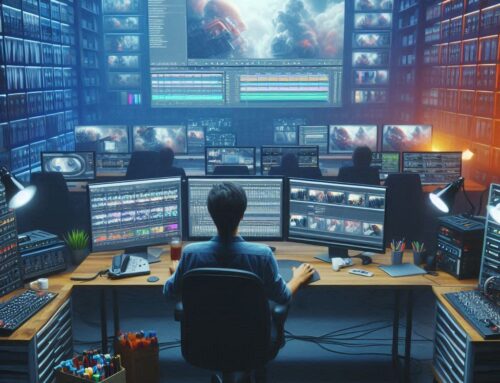Unveiling the Essence of Color Grading

Significance in Filmmaking
In the intricate tapestry of filmmaking, color grading emerges as a transformative process. It adds depth, emotion, and visual cohesion, elevating each frame to tell a compelling story. Let’s dive into the captivating world of color grading, exploring its profound impact on the cinematic narrative.
Decoding Color Grading
What is Color Grading? Color grading, a post-production marvel, is the art of adjusting and enhancing colors in a film or video. It surpasses simple correction, involving manipulation of tones, contrast, brightness, and saturation. The goal? To create a visually striking masterpiece that evokes emotions and ensures narrative consistency.
Traversing Through Color Grading’s History
Analog to Digital Evolution
The history of color enhancement unfolds from the analog era of film to today’s digital age. In cinema’s early days, chemical processes directly applied to film stock achieved color correction. In addition, the digital transition ushered in unprecedented control and flexibility, revolutionizing the art.
Mastering Key Techniques in Color Grading
Foundational Color Correction
The journey begins with color correction—aligning color balance, exposure, and contrast. Moreover, this foundational step ensures footage remains true to the original scene.
Stylistic Grading
Filmmakers and colorists employ distinct styles for visual identity. Warm or cool tones, vintage desaturation, or high-contrast correction craft unique looks, contributing to a film’s aesthetic.
Harmonizing Colors
Creating a harmonious color palette is crucial. In addition, color correction allows filmmakers to balance and coordinate colors across scenes, enhancing overall aesthetic appeal.
Mood Manipulation
Colors are emotional messengers. Color correction intensifies or softens emotions by manipulating the color scheme, perfectly aligning with the narrative.
Color Grading’s Modern Applications
Ubiquity in Filmmaking
Modern filmmaking embraces color correction in various genres. Moreover, advanced tools democratize the process, empowering filmmakers to experiment and refine their visual storytelling skills.
Color Grading in Television
Television series leverage color enhancement for visual continuity. Distinct correction styles contribute to a show’s identity, aiding in conveying shifts in narrative tone.
Importance of Color Manipulation or Color Correction
Color enhancement is a crucial facet of image and video editing, aimed at refining and optimizing the color characteristics of visual content. This process involves adjusting various elements such as color balance, saturation, contrast, and brightness to achieve a more vibrant, balanced, and visually appealing result. Whether in photography, film, or digital media, color enhancement allows creators to evoke specific moods, enhance storytelling, and ensure a cohesive and polished aesthetic.
Moreover, in the realm of color enhancement, advanced software tools provide artists and editors with precise control over individual color channels, allowing for fine-tuning and adjustment of hues to achieve the desired visual impact. This meticulous approach ensures that the final output not only looks aesthetically pleasing but also aligns with the creative vision of the content creator. Whether subtle tweaks to bring out natural tones or bold adjustments for artistic expression, color enhancement plays a pivotal role in shaping the overall visual experience for audiences across various media platforms.
The Brushstroke of Color Grading: A Cinematic Conclusion
In the cinematic tapestry, color grading stands as a powerful brushstroke, painting emotions and depth onto each frame. From correction to sculpting a visual masterpiece, color correction is an indispensable art form, enhancing the storytelling experience. As technology advances, color enhancement tools will evolve, offering new possibilities for creative expression in the dynamic world of cinema.
Follow Our Newsletter on LinkedIn – Beyond the Green Screen



